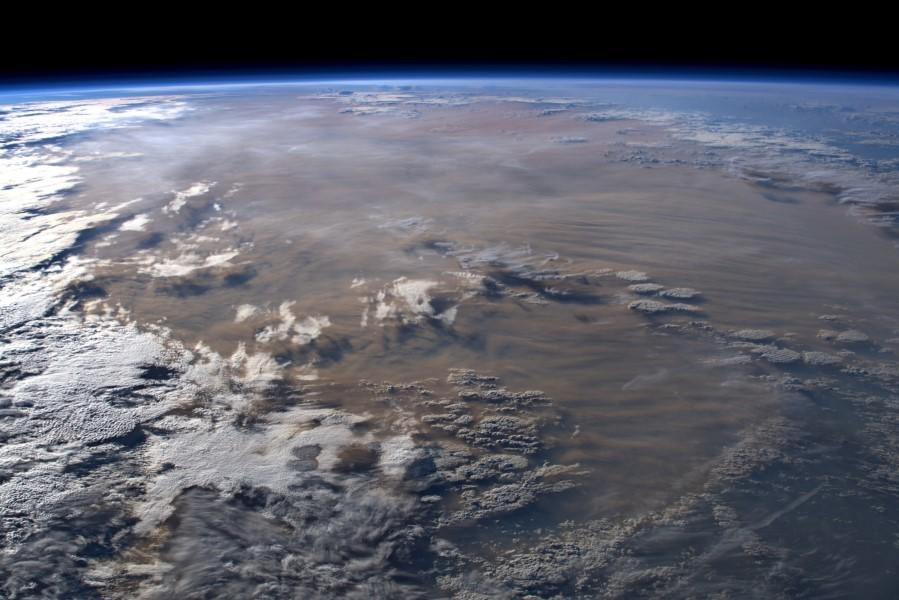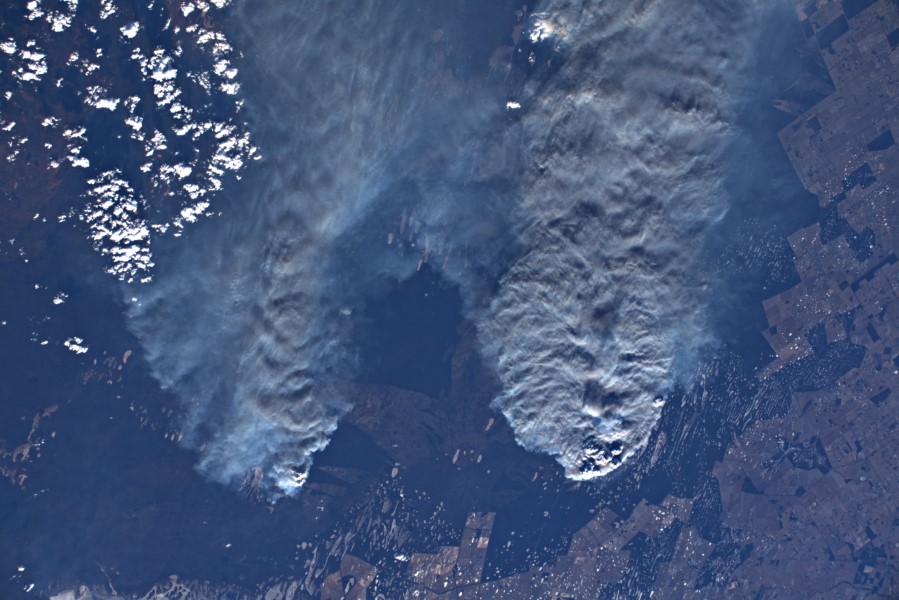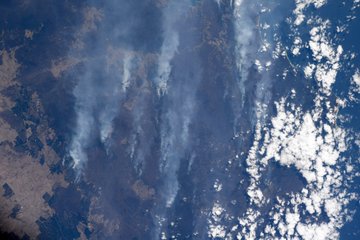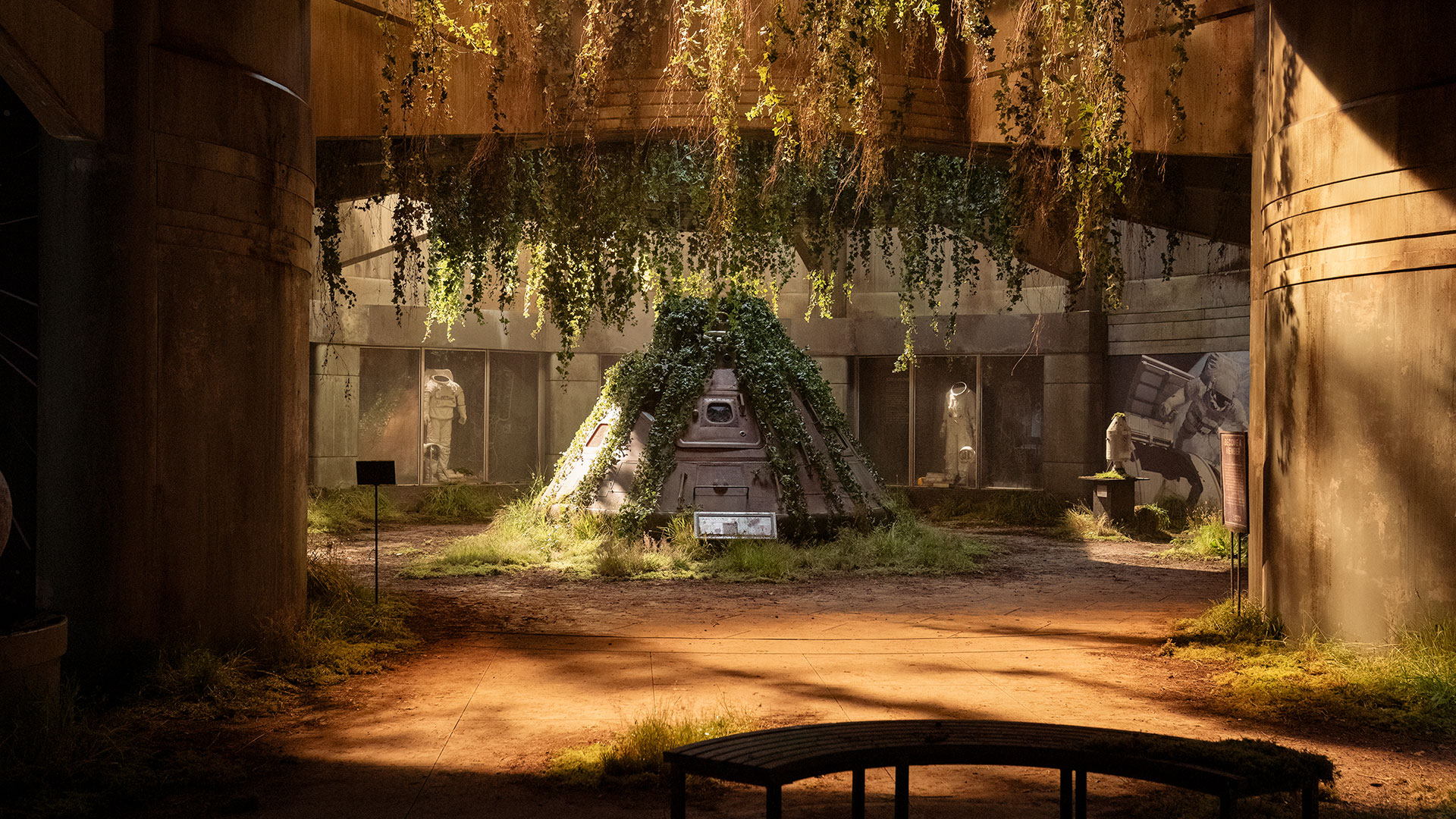Astronauts spot smoke from growing Australian wildfires from space

As the deadly Australian wildfires spread smoke around the world, astronauts in space are closely watching the burns advance.
International Space Station commander and Italian astronaut Luca Parmitano sent a series of tweets showing the environmental effects of the deadly bush fires, which have killed dozens of people in recent weeks and are now wrapping smog around major Australian cities, such as Adelaide, Canberra, Melbourne and Sydney. NASA is tracking smoke spreading around the globe, which Parmitano could easily see from space.
"An immense ash cloud covers Australia as we fly toward the sunset," Parmitano tweeted Monday (Jan. 13), showing a thick cloud of dust and smoke covering the desert. More pictures from Parmitano showed the dust streaming over the ocean near Australia. "Australia fires: lives, hopes, dreams in ashes," he said in another tweet Sunday (Jan. 12).
Related: Australia's Deadly Wildfires in Photos: The View from Space
NASA astronaut Christina Koch, who just completed 300 consecutive days in space on her first space mission, also shared several pictures from orbit showing dust flying across Australia and smoke rising from several fires. "Australia. Our hearts and thoughts are with you," Koch tweeted Tuesday (Jan. 14).
Thunderstorms induced by the wildfires are accelerating the smoke plume in its path around the world. The smoke is now likely to arrive back in Australian airspace in the coming days, according to ABC Australia. Since the smoke is rising at least 17 kilometers (10 miles) high, it can "travel relatively unimpeded, above most of the atmosphere and weather," Lisa Harvey-Smith, an astrophysicist at the University of New South Wales, told ABC.

Australians are quickly learning about the different types of clouds that accompany wildfire smoke plumes. These fire-born clouds carry names such as pyrocumulonimbus and flammagenitus, according to a recent NASA Earth Observatory blog post.
Get the Space.com Newsletter
Breaking space news, the latest updates on rocket launches, skywatching events and more!
"The formation of pyrocumulus clouds requires fires to burn hot enough to create an updraft of superheated, fast-rising air," NASA wrote. "As the hot air rises and spreads out, it cools, causing water vapor to condense and form clouds. In certain conditions, powerful updrafts can create clouds that rise several kilometers and turn into full-fledged thunderstorms … the storms pose serious risks for pilots and firefighters due to powerful turbulence."

- Astronauts Spot Australia's Deadly Wildfires from Space Station As Satellites Keep Watch
- Satellite Images Show Australia's Devastating Wildfires from Space
- Devastation from Deadly Camp and Woolsey Fires Seen from Space
Follow Elizabeth Howell on Twitter @howellspace. Follow us on Twitter @Spacedotcom and on Facebook.

Join our Space Forums to keep talking space on the latest missions, night sky and more! And if you have a news tip, correction or comment, let us know at: community@space.com.

Elizabeth Howell (she/her), Ph.D., was a staff writer in the spaceflight channel between 2022 and 2024 specializing in Canadian space news. She was contributing writer for Space.com for 10 years from 2012 to 2024. Elizabeth's reporting includes multiple exclusives with the White House, leading world coverage about a lost-and-found space tomato on the International Space Station, witnessing five human spaceflight launches on two continents, flying parabolic, working inside a spacesuit, and participating in a simulated Mars mission. Her latest book, "Why Am I Taller?" (ECW Press, 2022) is co-written with astronaut Dave Williams.
